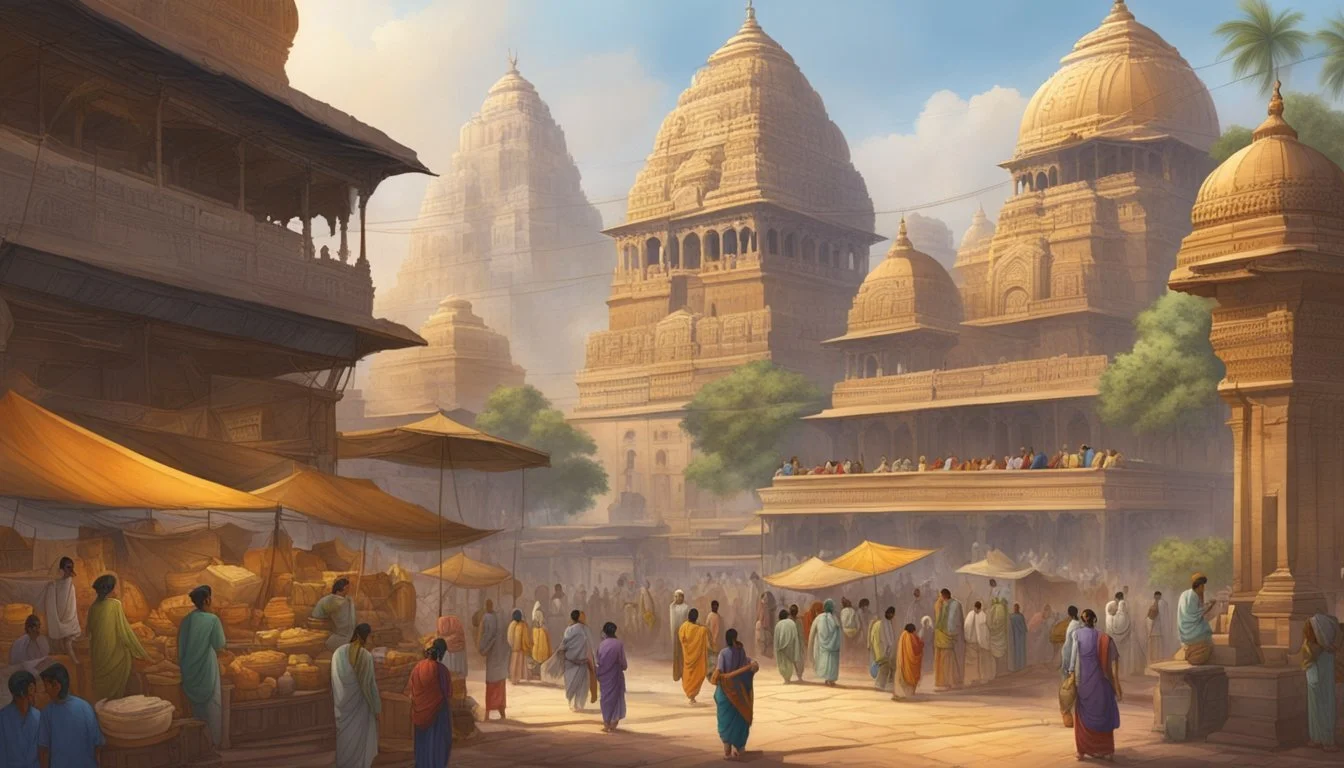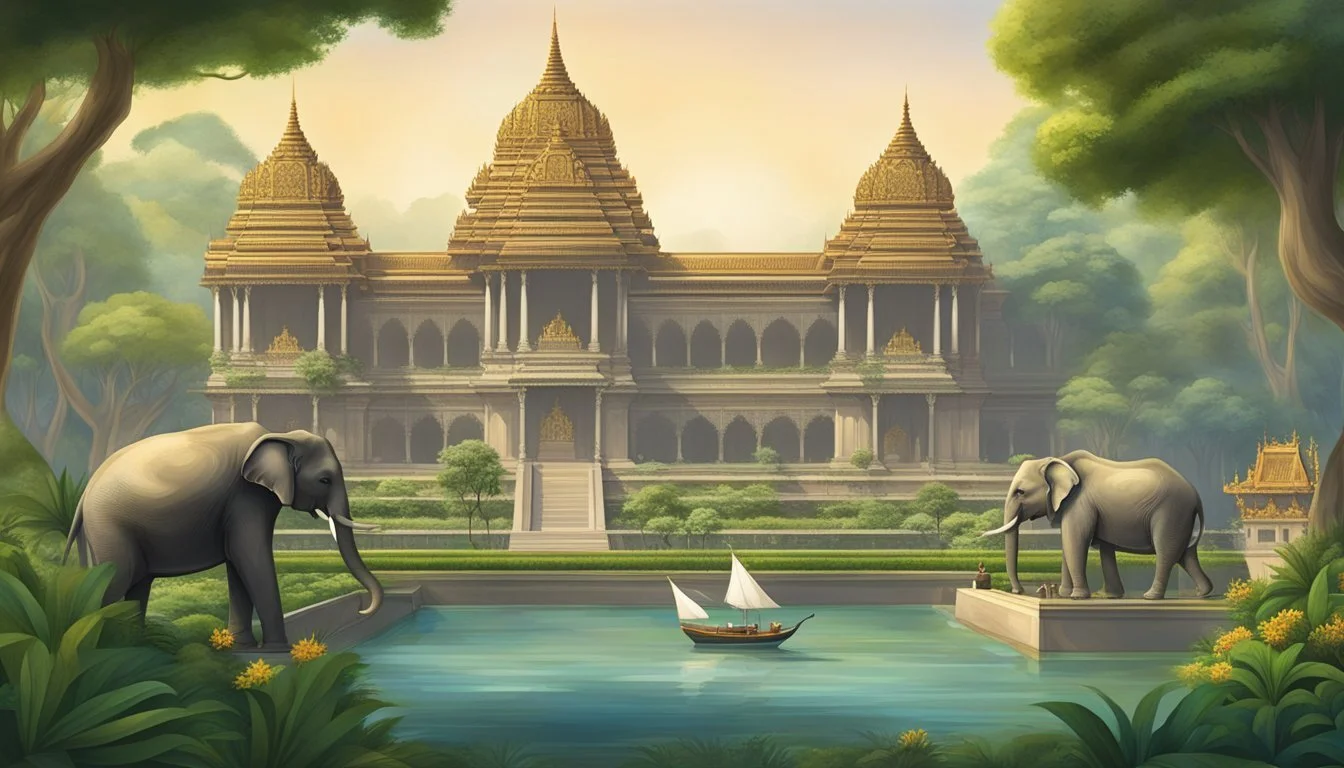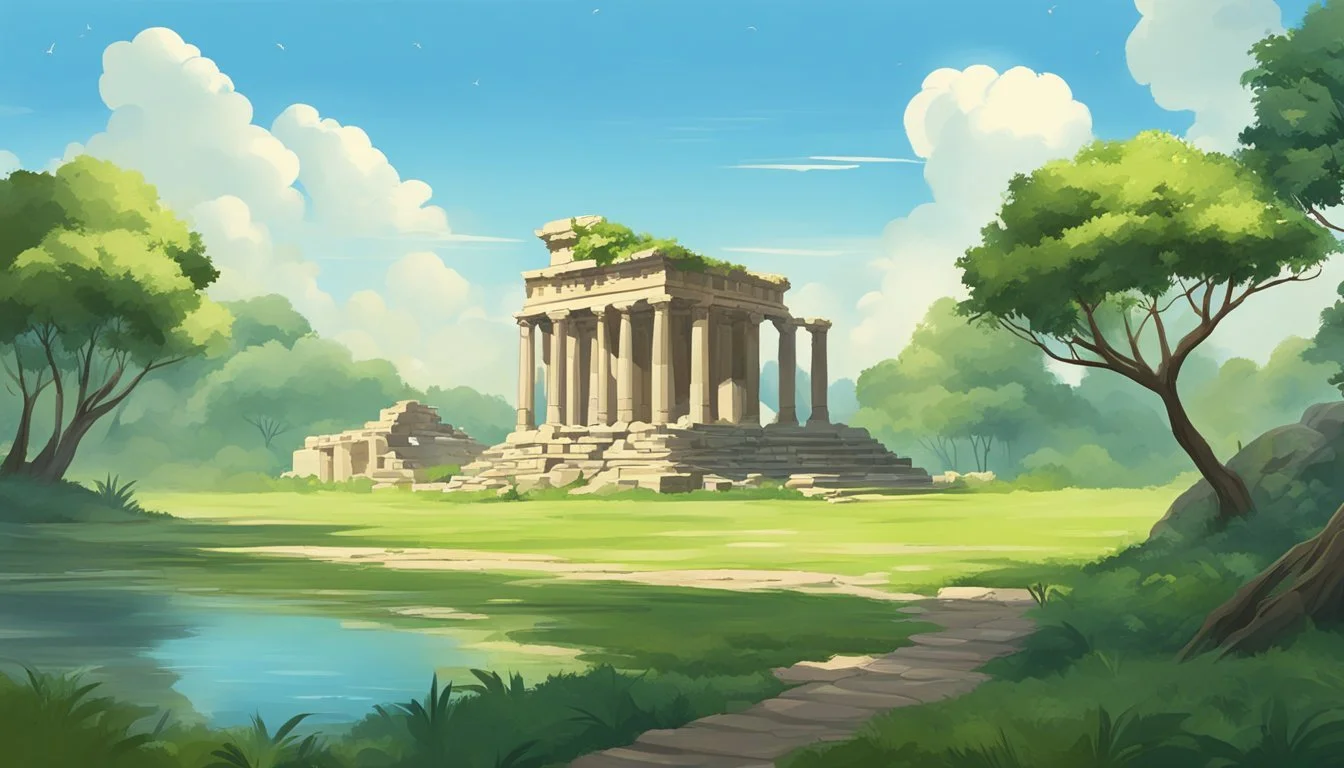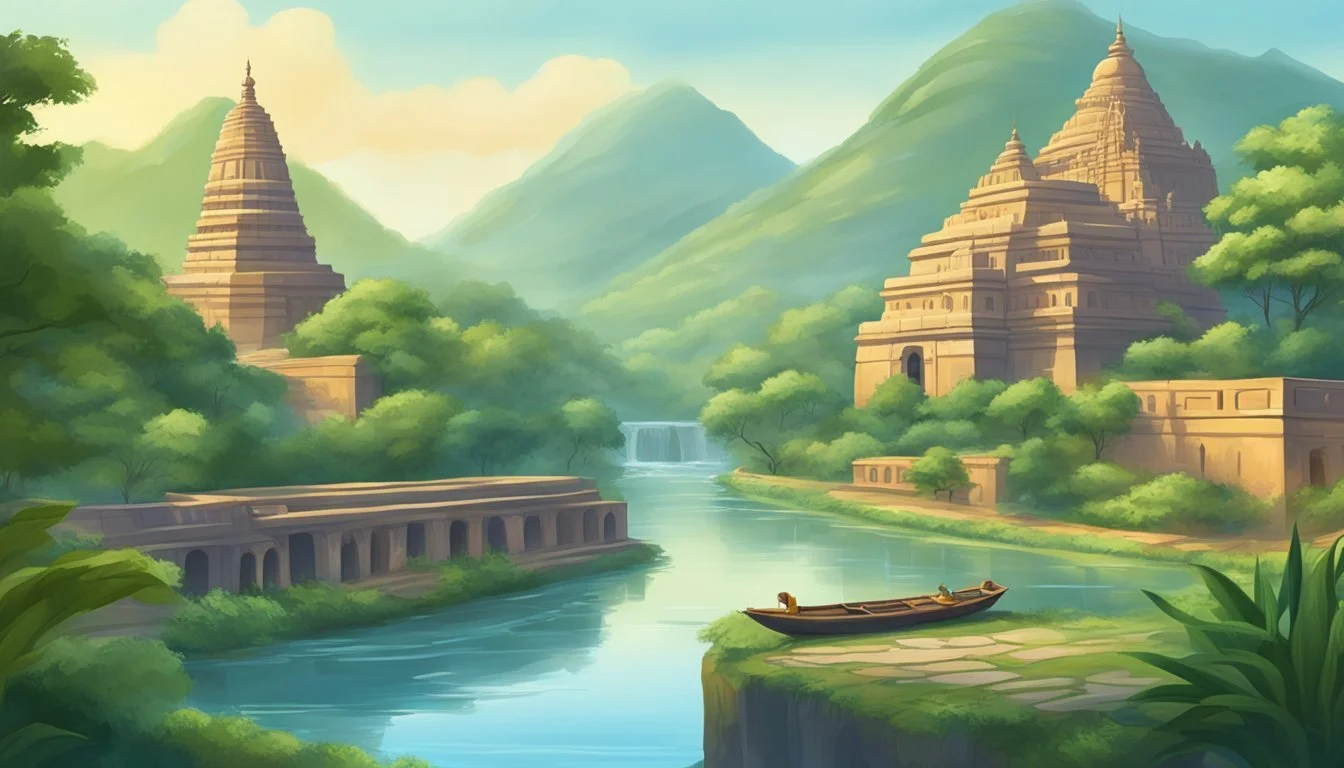11 Documentaries Examining the History of Ancient India
Unveiling the Subcontinent's Rich Past
Ancient India boasts a rich and complex history spanning thousands of years. From the enigmatic Indus Valley Civilization to the rise of powerful empires, the subcontinent has been home to diverse cultures, philosophies, and innovations that have shaped world history.
Documentaries offer a captivating way to explore the depths of ancient Indian civilization, bringing to life the archaeological evidence, cultural traditions, and historical narratives. These films provide viewers with stunning visuals, expert insights, and compelling storytelling that illuminate the fascinating world of India's distant past. Through a carefully curated selection of documentaries, audiences can gain a deeper understanding of this pivotal region's contributions to human civilization.
1) "India: The Birth of Civilization" by Michael Wood
"India: The Birth of Civilization" is a documentary by renowned historian Michael Wood. It explores the origins of Indian civilization and its profound impact on world history.
Wood travels across the subcontinent, visiting ancient sites and examining archaeological evidence. He traces the development of early Indian societies from the Indus Valley Civilization to the rise of great empires.
The documentary highlights India's contributions to mathematics, astronomy, and philosophy. It showcases the country's rich cultural heritage, including its diverse religions and artistic traditions.
Wood interviews experts and local communities to gain insights into India's past. He examines how ancient practices and beliefs continue to shape modern Indian society.
The film provides a comprehensive overview of India's early history. It offers viewers a deep appreciation for the country's enduring legacy and its role in shaping global civilization.
2) "The Story of India" by BBC
"The Story of India" is a captivating BBC documentary series that explores the rich history of the Indian subcontinent. Presented by historian Michael Wood, the series originally aired in 2007 on BBC Two.
The documentary spans six episodes, covering 10,000 years of Indian history. Wood travels across India, meeting locals and experts to uncover the nation's past and present.
Each episode delves into different periods and aspects of Indian civilization. The series examines ancient civilizations, the rise of major religions, and the impact of various empires on the region.
Wood's engaging narration brings India's complex history to life. He explores archaeological sites, religious centers, and bustling modern cities to illustrate the country's journey through time.
The series not only focuses on historical events but also highlights India's cultural contributions to the world. It showcases the nation's art, philosophy, and scientific achievements.
"The Story of India" provides viewers with a comprehensive and visually stunning overview of Indian history. It offers insights into how past events have shaped the modern nation.
3) "Mysteries of Asia: Lost Temples of India"
This documentary explores the ancient temples of India built over 1,000 years ago. Originally produced for The Learning Channel, it forms part of a three-part series on Asian mysteries.
The film delves into the sophisticated building techniques used by ancient temple architects. These majestic structures showcase remarkable complexity and grandeur, yet remain largely off the beaten path for modern tourists.
Historians and experts examine the intricate details of these temples, shedding light on their construction methods. One fascinating aspect revealed is the use of trained elephants to transport millions of stone blocks for building.
The documentary highlights the historical significance of these temples and their role in Indian culture. It offers viewers a rare glimpse into architectural marvels that have stood the test of time.
Through stunning visuals and expert commentary, "Mysteries of Asia: Lost Temples of India" brings to life the rich heritage of ancient Indian temple architecture. It invites audiences to appreciate the ingenuity and craftsmanship of civilizations long past.
4) "Ancient India: Land of Mystery" by Insight Media
"Ancient India: Land of Mystery" is a captivating documentary that explores the rich history and culture of ancient India. The film delves into archaeological discoveries that have shed light on the origins and lifestyles of prehistoric peoples in the Indian subcontinent.
The documentary highlights significant archaeological sites, including Mohenjodaro and Harappa. These excavations, which began in the 1920s, have revealed over 1,000 sites associated with the Indus Valley Civilization.
Viewers are taken on a journey through time, from the early Harappan cities of the Indus River Valley to the later Mauryan and Gupta Empires. The film examines the development of Indian civilization, including its religions, art, and architecture.
Through stunning visuals and expert commentary, the documentary brings ancient India to life. It showcases the intricate urban planning of Indus Valley cities and the artistic achievements of later periods.
The film also explores the legacy of ancient Indian civilization and its enduring influence on modern culture. It presents a comprehensive overview of India's archaeological treasures and their significance in understanding human history.
5) "Treasures of the Indus" by Sona Datta
"Treasures of the Indus" is a captivating BBC documentary series hosted by historian Sona Datta. The program explores the rich history and cultural heritage of the Indian subcontinent, focusing on the Indus River region.
Datta guides viewers through 4,000 years of civilization, examining ancient artifacts and architectural wonders. The series highlights how these treasures have shaped modern Indian identity and influenced the wider world.
The documentary covers diverse civilizations, religions, and cultures that have flourished along the Indus. It showcases the region's stunning landscapes and archaeological sites, bringing to life the stories of ancient peoples.
Sona Datta's expertise and engaging presentation style make complex historical topics accessible to a broad audience. The series combines on-location filming with expert interviews to provide a comprehensive view of the area's significance.
"Treasures of the Indus" offers viewers a unique perspective on one of the world's oldest and most influential regions. It illuminates the connections between ancient civilizations and contemporary Indian society.
6) "Secrets of the Taj Mahal" by Fredrick Stubbs
"Secrets of the Taj Mahal" explores one of India's most iconic monuments. Fredrick Stubbs delves into the history and architecture of this 17th-century marvel.
The documentary examines the construction techniques used to build the Taj Mahal. It reveals insights into the materials and engineering methods employed by Mughal craftsmen.
Stubbs investigates the symbolism and design elements incorporated into the structure. He analyzes the intricate marble inlays and geometric patterns that adorn the mausoleum.
The film also sheds light on the love story behind the Taj Mahal's creation. It recounts Emperor Shah Jahan's devotion to his wife Mumtaz Mahal, which inspired the monument.
Viewers learn about the challenges faced during the Taj Mahal's construction. The documentary discusses the logistics of transporting materials and the skilled labor required for the project.
Stubbs examines recent scientific studies on the Taj Mahal. He presents findings on preservation efforts and the impact of environmental factors on the structure.
7) "Lost Worlds: The Story of Ancient India"
"Lost Worlds: The Story of Ancient India" explores the rich tapestry of ancient Indian civilization. This documentary takes viewers on a journey through time, uncovering the secrets of long-lost cities and forgotten empires.
The film showcases archaeological discoveries that have shed light on India's ancient past. It examines the remains of the Indus Valley Civilization, revealing the advanced urban planning of cities like Mohenjo-daro and Harappa.
Viewers learn about the rise of powerful kingdoms and empires, including the Mauryan and Gupta dynasties. The documentary highlights their contributions to art, science, and philosophy.
Expert historians and archaeologists provide insights into ancient Indian society, culture, and religious practices. The film explores the origins of Hinduism, Buddhism, and Jainism, tracing their evolution over centuries.
"Lost Worlds" also delves into India's trade connections with other ancient civilizations. It examines how these interactions influenced art, architecture, and cultural practices across the region.
Through stunning visuals and reenactments, the documentary brings ancient India to life. It offers a comprehensive look at the subcontinent's rich history, from its earliest settlements to the medieval period.
8) "Paths of the Gods" by Bettany Hughes
"Paths of the Gods" is a documentary presented by British historian Bettany Hughes. It explores the ancient religious traditions of India, focusing on the origins and development of Hinduism.
The film takes viewers on a journey through various sacred sites across India. Hughes visits temples, ashrams, and other places of spiritual significance to uncover the roots of Hindu beliefs and practices.
Throughout the documentary, Hughes examines the role of deities in Hindu mythology. She investigates the stories behind major gods and goddesses, explaining their significance in Indian culture.
The film also delves into the philosophical aspects of Hinduism. It explores concepts such as karma, reincarnation, and the cycle of birth and death that are central to the religion.
Hughes interviews religious scholars, spiritual leaders, and practitioners to gain insights into Hindu traditions. These conversations provide viewers with a deeper understanding of the faith's complexities.
"Paths of the Gods" showcases the vibrant rituals and festivals associated with Hinduism. It captures the colorful celebrations and devotional practices that have been preserved for thousands of years.
9) "The Golden Empire: India's Maurya Dynasty"
"The Golden Empire: India's Maurya Dynasty" explores the rise and fall of one of ancient India's most powerful empires. The documentary examines the reign of Chandragupta Maurya, who founded the dynasty in 321 BCE.
Viewers learn about the empire's expansion under Chandragupta and his successors. The film highlights the role of Chanakya, a shrewd advisor who helped shape the empire's political strategies.
A significant focus is placed on Emperor Ashoka, considered the greatest Mauryan ruler. The documentary details his early conquests and subsequent embrace of Buddhism following the bloody Kalinga War.
The film showcases the architectural and artistic achievements of the Mauryan period. It features the famous Ashoka Pillars and the grand palace at Pataliputra, the empire's capital.
Trade and diplomacy during the Mauryan era are explored, including connections with Hellenistic kingdoms. The documentary also examines the empire's advanced administrative systems and extensive road networks.
The decline of the Mauryan Empire after Ashoka's death is discussed, providing insight into the factors that led to its eventual collapse around 185 BCE.
10) "Uncovering Ancient India" by National Geographic
National Geographic's documentary "Uncovering Ancient India" offers viewers a captivating journey through the subcontinent's rich prehistoric past. The film explores archaeological sites and artifacts that provide insights into early human settlements and civilizations in the region.
Experts analyze Stone Age tools and remnants of ancient communities to piece together the story of India's earliest inhabitants. The documentary examines the development of agriculture and the rise of the first cities in the Indus Valley.
Viewers are introduced to key archaeological discoveries that have shaped our understanding of ancient Indian culture. The film showcases intricate artifacts, architectural remains, and early examples of writing systems.
"Uncovering Ancient India" also delves into the origins of Hinduism and the emergence of other significant religious and philosophical traditions. It traces the evolution of social structures and governance systems in early Indian societies.
The documentary utilizes state-of-the-art technology to recreate ancient landscapes and structures, giving viewers a vivid sense of life in prehistoric India. Through expert commentary and stunning visuals, it brings the distant past to life for modern audiences.
11) "Ashoka: The Great Emperor of India"
Ashoka the Great ruled the Mauryan Empire from 268 to 232 BCE, becoming one of India's most influential monarchs. Initially known for his military conquests, Ashoka underwent a profound transformation after witnessing the devastation of war.
Following the bloody Kalinga War, Ashoka embraced Buddhism and adopted a policy of nonviolence. He promoted religious tolerance, social welfare, and the spread of Buddhist teachings throughout his empire.
Ashoka's reign saw the construction of numerous stupas, pillars, and rock edicts across India. These monuments, inscribed with his edicts, provide valuable insights into his governance and philosophy.
The Ashoka Pillar at Allahabad, erected around 262 BCE, stands as a testament to his rule. It bears inscriptions detailing his policies and moral principles, offering a glimpse into the emperor's mindset.
Ashoka's legacy extends beyond India's borders. He sent Buddhist missionaries to various parts of Asia, contributing to the spread of the religion. His emphasis on dharma, or righteous living, influenced Indian political thought for centuries to come.
Influence of Ancient Indian Civilizations
Ancient Indian civilizations made profound contributions to world history, leaving lasting impacts on philosophy, science, and culture. Their innovations and ideas spread far beyond the subcontinent, shaping societies across Asia and beyond.
The Indus Valley Civilization
The Indus Valley Civilization flourished from around 3300 to 1600 BCE. It was one of the world's first urban cultures, known for its advanced city planning and sophisticated water management systems.
The cities of Harappa and Mohenjo-daro featured grid-like street layouts and complex drainage networks. These engineering marvels were unparalleled for their time.
Indus Valley people developed a writing system that remains undeciphered. They also created standardized weights and measures, facilitating trade across their vast territory.
The civilization's influence spread through maritime trade. Artifacts from the Indus Valley have been found in Mesopotamia, indicating extensive commercial networks.
Gupta and Maurya Empires
The Maurya Empire (322-185 BCE) and Gupta Empire (320-550 CE) were periods of great cultural and scientific advancement in ancient India.
The Mauryan emperor Ashoka promoted Buddhism, sending missionaries across Asia. This spread of Buddhist philosophy influenced cultures from Sri Lanka to China.
Gupta-era mathematicians made groundbreaking discoveries. They introduced the concept of zero and developed the decimal system, which revolutionized mathematics globally.
In astronomy, scholars like Aryabhata proposed a heliocentric model of the solar system. Their works influenced later astronomers in the Islamic world and Europe.
The Gupta period saw a flourishing of art and literature. Sanskrit literature from this era, including works like the Kamasutra, continue to be studied worldwide.
Cultural and Philosophical Contributions
Ancient India made profound contributions to global culture and philosophy. Its innovations in arts, sciences, religions, and philosophical systems shaped civilizations far beyond its borders and continue to influence the world today.
Advancements in Arts and Sciences
Indian mathematicians developed the decimal system and the concept of zero. This revolutionary innovation spread globally, becoming the foundation of modern mathematics. In astronomy, ancient Indians accurately calculated the Earth's circumference and axial tilt.
The arts flourished, with intricate temple architecture showcasing advanced engineering. The caves of Ajanta and Ellora feature elaborate paintings and sculptures that have endured for centuries. Sanskrit literature produced timeless epics like the Ramayana and Mahabharata.
Indian medicine, known as Ayurveda, pioneered holistic healing approaches. It emphasized the mind-body connection and the use of herbs and minerals for treatment. Many of its principles are still practiced today.
Development of Religions and Philosophies
Hinduism, one of the world's oldest religions, originated in ancient India. It introduced concepts like karma, dharma, and reincarnation that have influenced global spiritual thought.
Buddhism emerged as a major world religion, spreading its teachings of mindfulness and the Four Noble Truths across Asia. Jainism, with its emphasis on non-violence and asceticism, also developed during this period.
Indian philosophy gave rise to six major schools of thought: Nyaya, Vaisheshika, Samkhya, Yoga, Mimamsa, and Vedanta. These systems explored fundamental questions about existence, knowledge, and ethics. The concept of meditation, central to many Indian philosophical traditions, has gained worldwide popularity for its mental and physical benefits.
Archaeological Discoveries
Archaeological excavations have unearthed remarkable findings that shed light on ancient Indian civilizations. These discoveries provide tangible evidence of sophisticated urban planning, advanced technologies, and rich cultural practices.
Significant Excavations
The Indus Valley Civilization sites of Harappa and Mohenjo-daro stand out as pivotal excavations. Unearthed in the 1920s, these cities revealed a highly advanced urban culture dating back to 2500 BCE.
Archaeologists found well-planned streets, elaborate drainage systems, and multi-storied buildings. The Great Bath at Mohenjo-daro, a large public water tank, hints at the importance of ritual bathing.
Recent excavations at Rakhigarhi in Haryana have expanded our understanding of the Indus Valley Civilization's extent and complexity.
Artifacts and Their Interpretations
The discovery of seals with undeciphered script provides insights into ancient Indian writing systems. These small, intricately carved objects often depict animals and mythological figures.
Pottery findings, including the famous Black and Red Ware, indicate sophisticated ceramic techniques and artistic preferences.
Metal artifacts like copper tools and gold jewelry showcase advanced metallurgy skills. The Dancing Girl statue from Mohenjo-daro, a bronze figurine, exemplifies the artistic prowess of ancient craftsmen.
Terracotta figurines and toys found at various sites offer glimpses into daily life and religious practices of ancient Indian societies.






